Candelaria Turquoise refers to a variety of turquoise mined from the Candelaria district in the western part of Nevada, USA. This area, part of the larger Candelaria Hills and Candelaria Mining District, has been known for various mineral extractions for over a century, including silver and gold. However, it’s the turquoise, prized by both collectors and jewelry makers, that has become particularly iconic. Candelaria turquoise is notable for its striking color, intricate matrix patterns, and its historical and cultural significance.
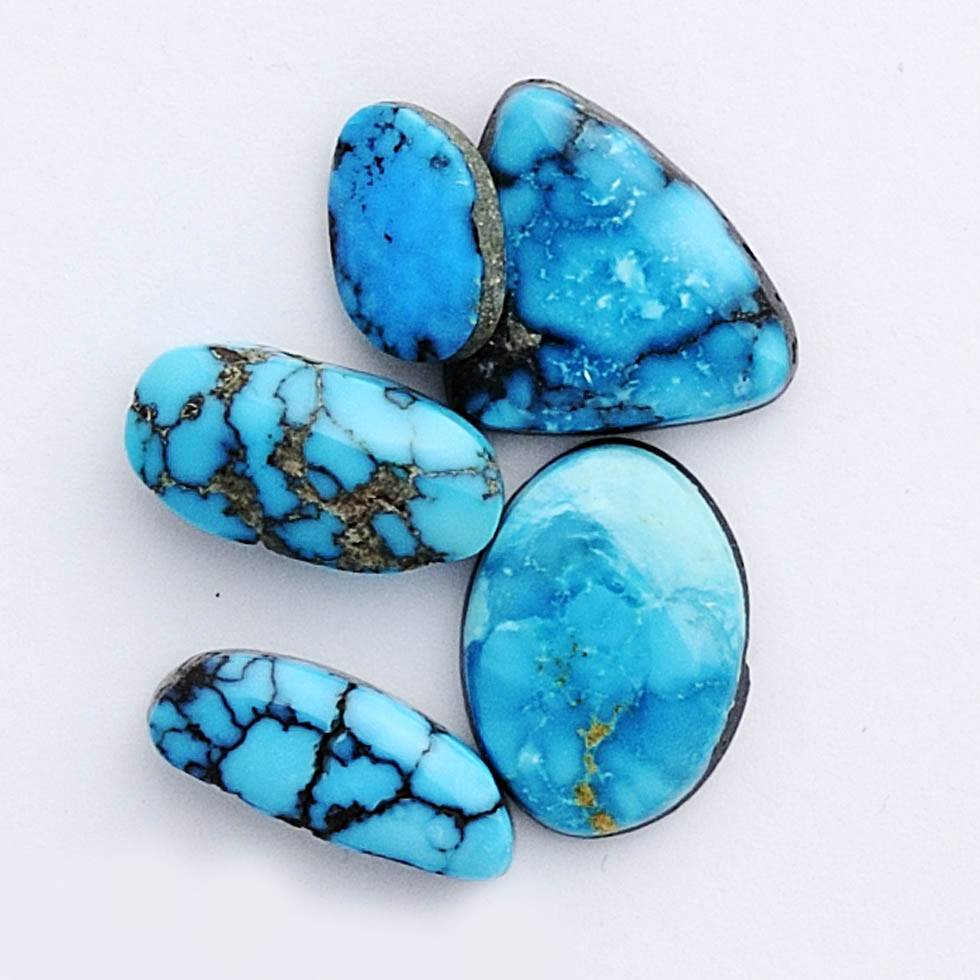
History of Candelaria Turquoise
The turquoise mines of Candelaria were first developed in the late 1800s, largely in conjunction with silver mining operations. Turquoise, a hydrous phosphate of copper and aluminum, forms in arid regions where the mineralization of these elements occurs in the host rock. Nevada, with its rich geological diversity and arid climate, is one of the prime locations in the United States for turquoise mining. Though the region was primarily known for silver, miners began noticing turquoise deposits as a byproduct of their excavations.
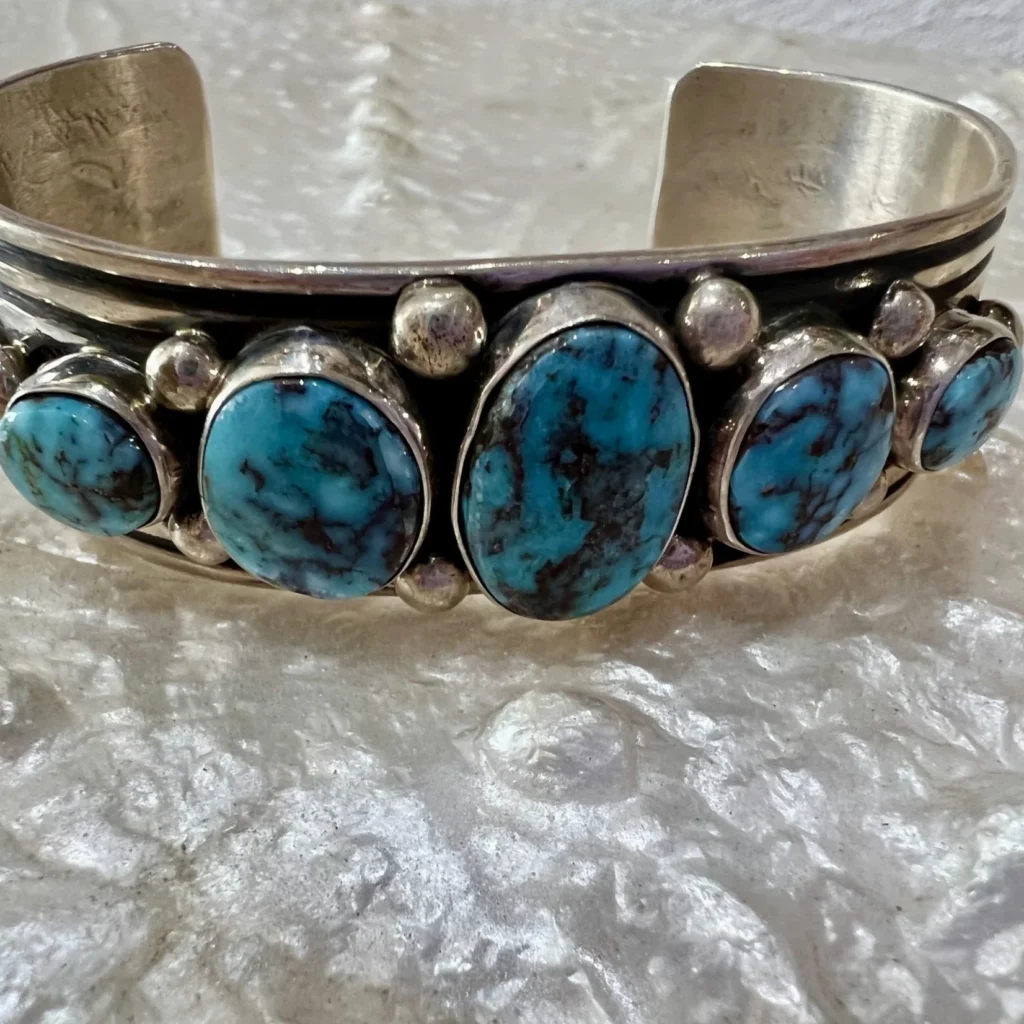
The Candelaria district rose to prominence during the silver boom, but the significance of its turquoise became more apparent over time, particularly as the demand for high-quality stones increased in the 20th century. In Native American cultures, particularly among the Navajo, Pueblo, and Zuni peoples, turquoise held deep symbolic meaning, representing protection, healing, and spiritual connection. The Candelaria variety was used in jewelry, spiritual items, and traded as a valuable commodity.
Characteristics of Candelaria Turquoise
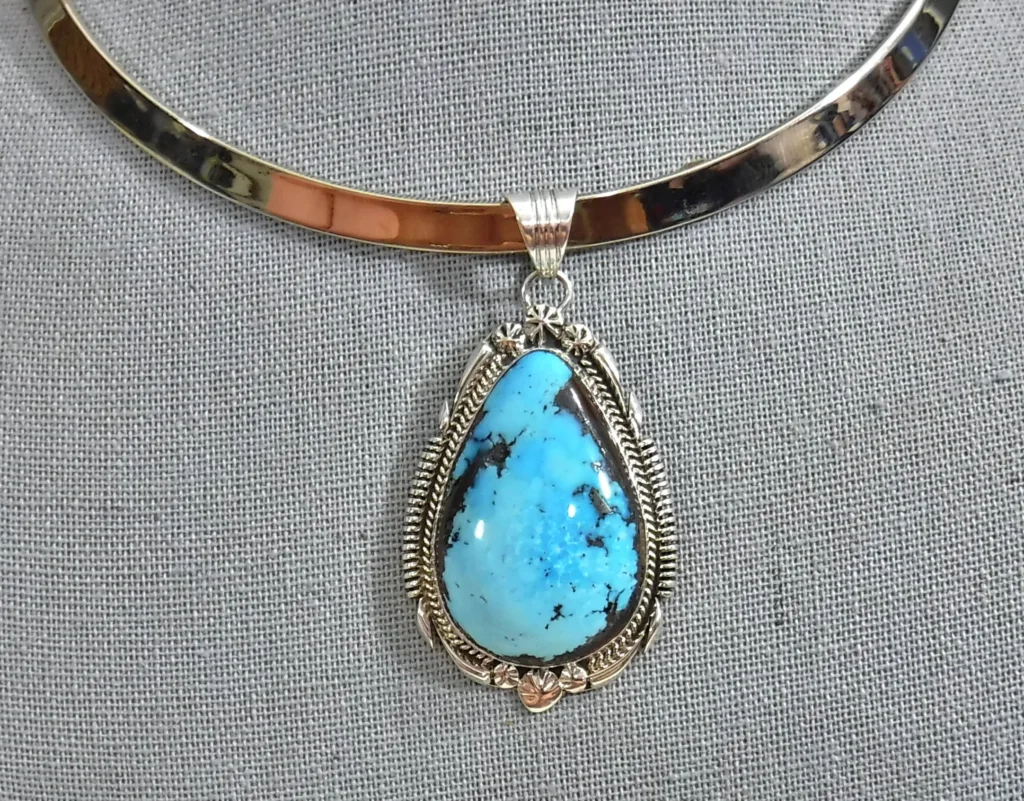
Candelaria turquoise is highly sought after due to its distinctive color variations and patterns. The stone ranges from pale blue to deep, rich sky blue, with many specimens featuring a greenish hue. One of the standout characteristics of Candelaria turquoise is its intricate matrix. The matrix is the web-like or splotchy pattern of darker minerals, often brown or black, that wind through the stone. This matrix can vary in prominence, with some stones being almost pure in color and others heavily veined.
The color of Candelaria turquoise is due to the presence of copper within the mineral structure. More copper results in bluer hues, while iron can introduce green tones. The intensity and variation of color within the Candelaria variety is one of the reasons collectors prize it so highly. This turquoise is typically found as nuggets or nodules, and its hardness allows for excellent polishing, making it a favorite among jewelry makers.
Mining Techniques and Sustainability
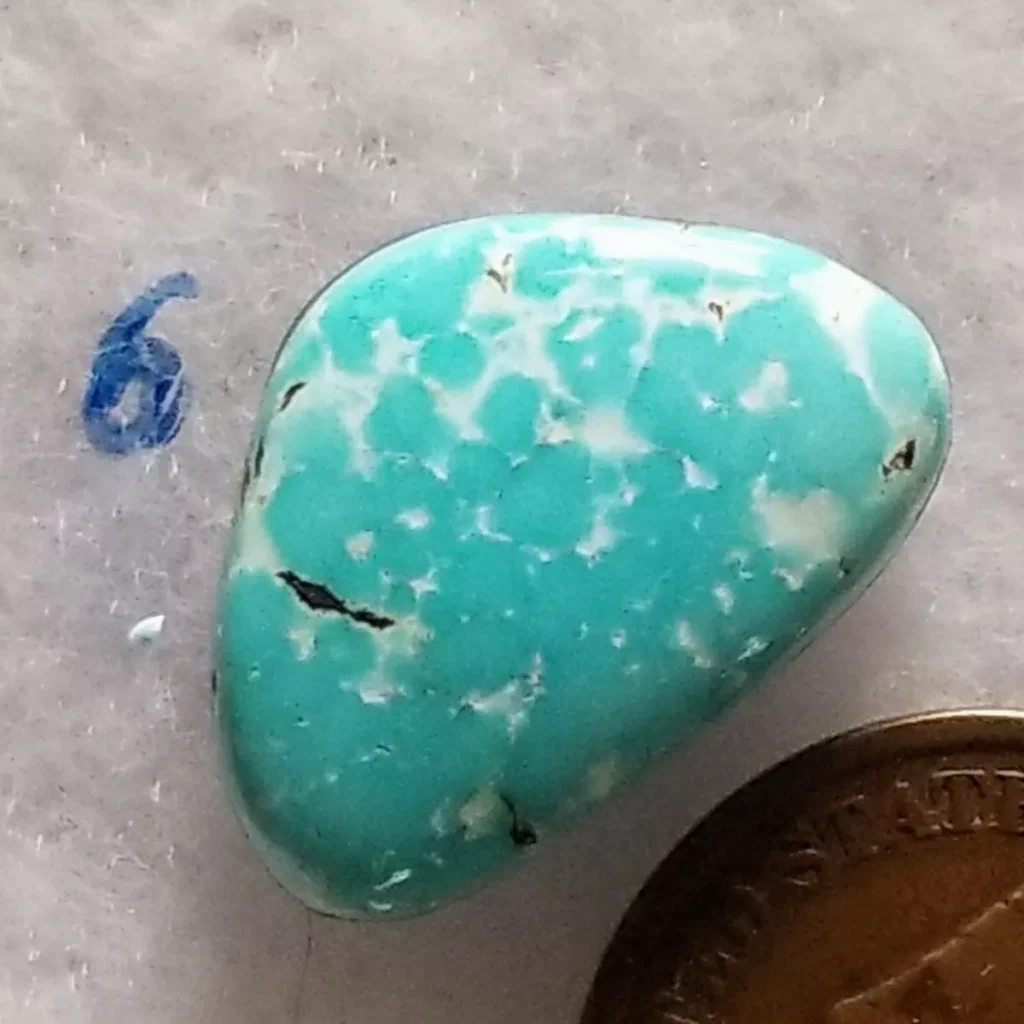
Mining turquoise in Candelaria has historically been a side venture compared to the larger-scale silver and gold operations. However, turquoise mining is a labor-intensive process that requires careful extraction to avoid damaging the stone. In the past, hand tools were commonly used to delicately extract the turquoise, but modern techniques have evolved to improve both efficiency and precision.
Today, many mines are worked intermittently, and the turquoise from Candelaria is considered rare due to the limited nature of the deposits. As with all mining, there are environmental concerns. Mining operations, even those focused on semi-precious stones like turquoise, can lead to landscape disruption and habitat destruction. However, in recent years, many operations have adopted more sustainable practices, focusing on minimizing environmental impact and ensuring that the land can recover after mining activities cease.
Use in Jewelry and Art
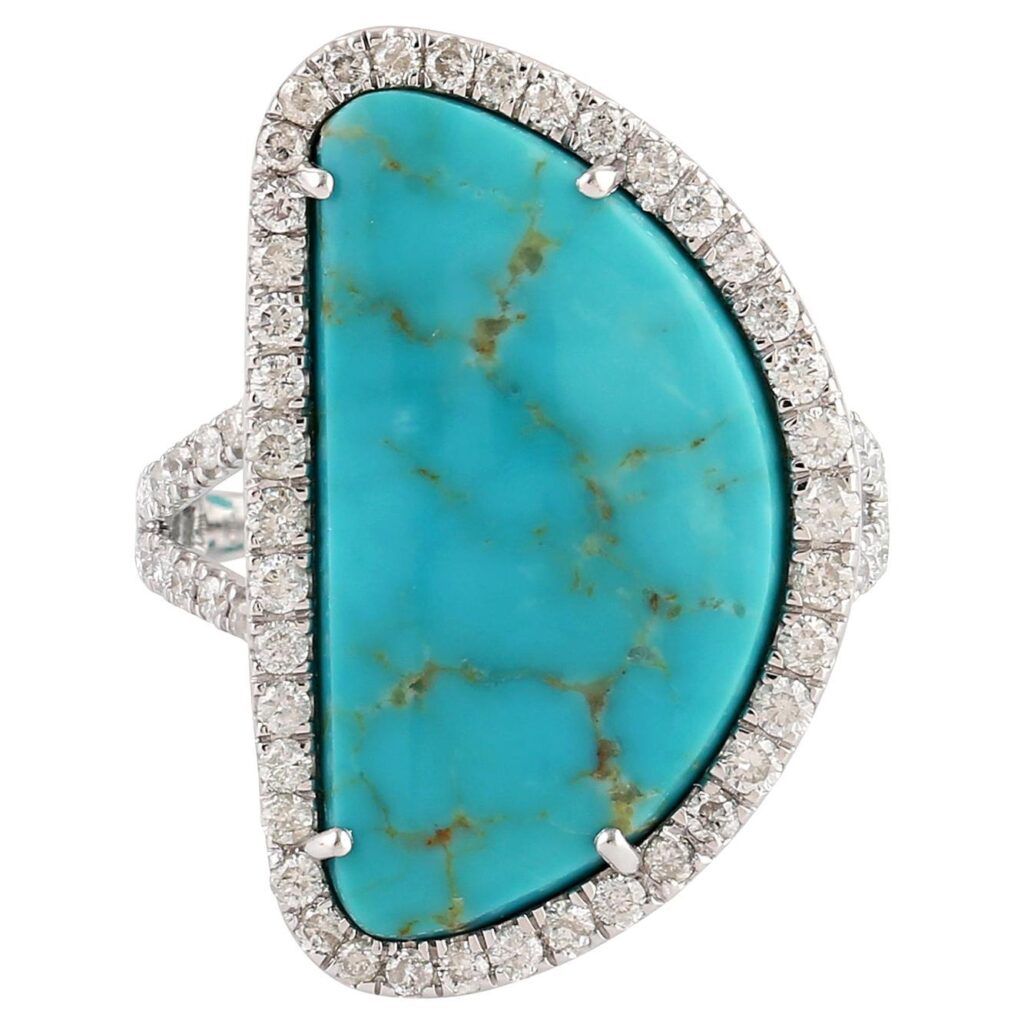
Candelaria turquoise has long been prized for its beauty and durability, making it a favorite material for both traditional and contemporary jewelry. Navajo silversmiths and other Indigenous artisans have incorporated Candelaria turquoise into stunning pieces of jewelry for decades. The stone’s bright blue hues, combined with silver, create striking bracelets, necklaces, rings, and earrings.
One of the hallmarks of Native American turquoise jewelry is the combination of the stone with intricate silverwork, often featuring motifs drawn from nature, such as feathers, animals, or celestial bodies. Candelaria turquoise, with its distinctive colors and matrix, adds a unique visual dimension to these designs. The stone is also used in inlay work, where pieces of turquoise are set into larger items, such as belt buckles, bolo ties, or ceremonial items.
The stone has also found a place in contemporary fine jewelry, with many modern designers using Candelaria turquoise in both minimalist and elaborate settings. Its striking color and unique matrix make it versatile for different styles, from rustic to high fashion.
Value and Market Trends
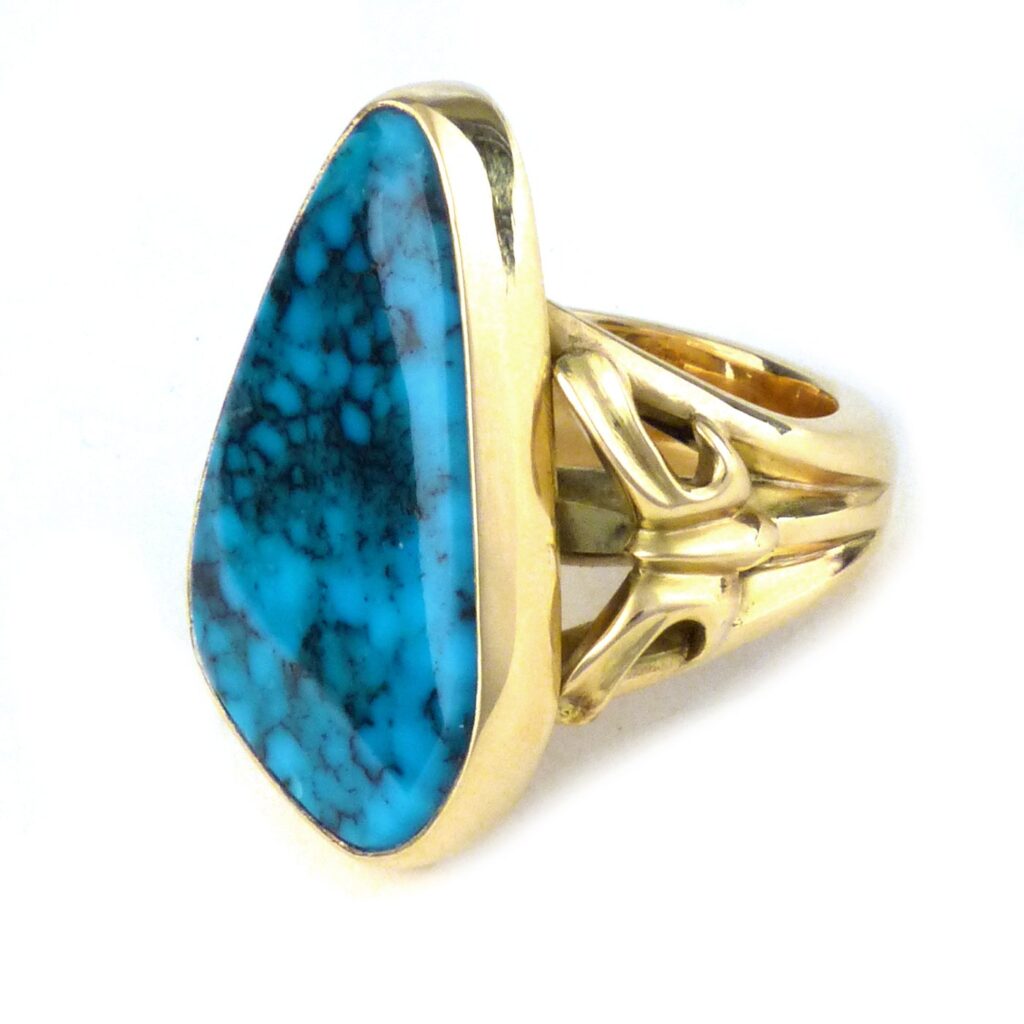
The value of Candelaria turquoise is influenced by several factors, including color, matrix, size, and quality of the stone. Stones that exhibit a pure, vibrant blue color with minimal matrix tend to be the most valuable, although some collectors prefer the intricate patterns that come with a heavier matrix. Larger stones, which are rarer, also command higher prices.
The market for turquoise, in general, has seen fluctuations over the years, influenced by trends in fashion, jewelry design, and the availability of high-quality material. However, Candelaria turquoise remains consistently sought after by collectors and artisans alike. Its relative rarity, combined with its historical significance and aesthetic appeal, ensures that it continues to hold a strong place in the market.
Cultural Significance
Beyond its monetary value, Candelaria turquoise holds deep cultural significance, particularly among Native American tribes in the southwestern United States. For these cultures, turquoise is more than just a stone; it is a symbol of life, protection, and harmony. Many Native American legends speak of turquoise as a piece of the sky fallen to earth, a gift from the gods to protect and guide humanity.
Turquoise is often used in ceremonial objects, such as prayer sticks, amulets, and spiritual jewelry. In some tribes, turquoise is believed to bring good fortune and protect against harm, both physical and spiritual. It is also seen as a stone of healing, with some Native healers using turquoise to draw out negative energy and restore balance to the body and mind.
The Candelaria variety, with its distinctive color and matrix, plays an important role in this cultural context. Its use in Native American jewelry, particularly in pieces made for ceremonial or spiritual purposes, is a testament to its enduring significance. For collectors of Native American art, owning a piece of Candelaria turquoise is often about more than just aesthetics or investment; it is a connection to a deeper cultural and spiritual heritage.
Conclusion
Candelaria turquoise is one of the most prized varieties of turquoise from the American Southwest, known for its striking color, beautiful matrix, and rich cultural history. From its roots in the mines of Nevada to its place in Native American culture and modern jewelry design, Candelaria turquoise continues to captivate collectors and artisans alike. Though its availability may be limited, its significance and beauty ensure that it remains a treasured gemstone for generations to come.




































